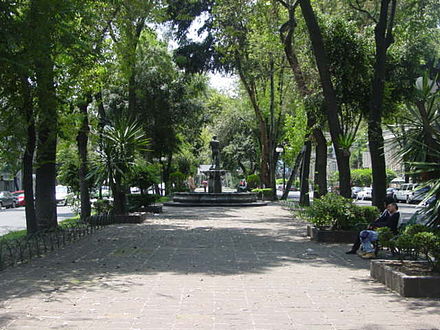
Gustavo A. Madero is one of the 16 municipalities into which Mexico City is divided.

The Ecological Green Party of Mexico is a green-conservative political party in Mexico. In the 2012 Legislative elections, the party took 34 seats in the Chamber of Deputies and nine seats in the Senate. During the 2012 Presidential election, PVEM supported Enrique Peña Nieto (EPN), the candidate from the Institutional Revolutionary Party (PRI), who was elected. In 2018, PVEM supported Todos por México Everyone for Mexico coalition, along with PRI and Panal. José Antonio Meade, the coalition's candidate, came in third in a four-way race, with 16.43% of the vote.
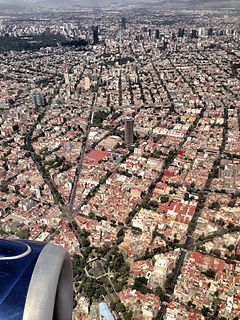
Colonia del Valle is a neighborhood in the Benito Juarez borough of Mexico City. It includes "...a great number of parks, vast and tree-lined streets, prestigious shopping malls, and some city landmarks...".
Operation Tijuana or Operation Baja California of the Government of Mexico is taking place in Tijuana and the surrounding areas of Baja California and Baja California Sur. This operation is part of the Joint Operation Against Drug Trafficking.
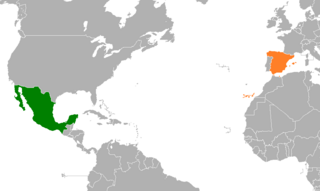
Mexican–Spanish relations refers to the bilateral relations between Mexico and Spain. Like many other Latin American nations, despite having achieved independence, Mexico retains a stable relationship with Spain. Both nations are members of the G-20, Organisation for Economic Co-operation and Development, Organization of Ibero-American States.

Condesa or La Condesa is an area in the Cuauhtémoc Borough of Mexico City, south of the Zona Rosa and 4 to 5 km west of the Zócalo, the city's main square. It is immediately west of Colonia Roma, together with which it is designated as a "Barrio Mágico Turístico". Together they are often referred to as Condesa–Roma, one of the most architecturally significant and bastion of the creative communities of the city.

La Romita is a small neighborhood located in the Colonia Roma section of Mexico City. The area began as an independent pre Hispanic village called Aztacalco, later renamed Romita. When the area around the village was redeveloped into housing for the wealthy, the village resisted and remained separate socially although officially part of Colonia Roma. During the 20th century the area had a reputation for being dangerous as it residents were relatively poor. Today, the area is no longer poor or dangerous, but its streets are narrower than the rest of Colonia Roma and its residents still consider themselves distinct.

Pequeño Seúl is a Koreatown in Mexico City. Most of the city's Korean population lives in and around the Zona Rosa. According to the newspaper Reforma, there are at least 5,000 Koreans living in Zona Rosa and about 6,000 total in Colonia Juárez, the larger officially recognized neighborhood of which the Zona Rosa is a part. Many Korean residents do not speak Spanish and are relatively isolated from their Mexican neighbors. The area around Hamburgo, Praga, Berna and Biarritz streets have converted into "Pequeño Seul," or Little Seoul, with Biarritz Street's residents almost 90% Korean. The number of Korean residents in the colonia continues to increase even as the number of younger people in general decreases.
Felícitas Sánchez Aguillón or Sánchez Neyra was a Mexican nurse, midwife, baby farmer and serial killer, active during the 1930s in Mexico City, who killed babies in her care. Between 40 and 50 murders were attributed to her. She was also known as "The Ogress of Colonia Roma,""The Female Ripper of Colonia Roma" and "The Human Crusher of Little Angels."

This article covers the history of the Colonia Roma neighborhood of Mexico City.
The San Felipe de Jesús Tianguis takes place on Sundays in the neighborhood of the same name in Gustavo A. Madero, Mexico City. It is Latin America's largest tianguis or street market, with 30,000 vendors and stretching 7 kilometers.
Churrería El Moro is a restaurant serving churros and hot chocolate in Mexico City. The original 1935 location is on Eje Central Lázaro Cárdenas near the Metro San Juan de Letrán in the Historic center of Mexico City. Since 2014 the grandchildren of the original owner have opened branches in Palacio de Hierro department store food halls, in the Mercado Roma food hall, on Parque México in Condesa, on Avenida Álvaro Obregón in Colonia Roma, and in Colonia Cuauhtémoc along Río Lerma street, a restaurant row.

Enriqueta Margarita Lavat Bayona, known professionally as Queta Lavat, is a prominent Mexican television actress and one of the most recognized actresses of the Golden Age of Mexican cinema. She is the sister of the late actor Jorge Lavat and voice actor José Lavat, and mother of Mexican sports anchor Pablo Carrillo. She is best known for her roles in Las tandas del principal, Cruz de amor and Clase 406.
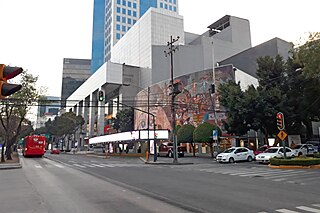
San José Insurgentes is a neighborhood located in southwest Mexico City.

Colonia Florida is a neighborhood in Mexico City, located in the Álvaro Obregón borough.
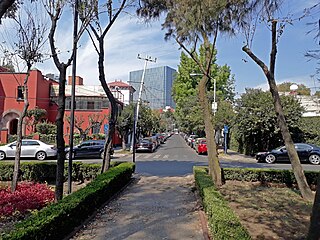
Guadalupe Inn is a colonia in Mexico City.


